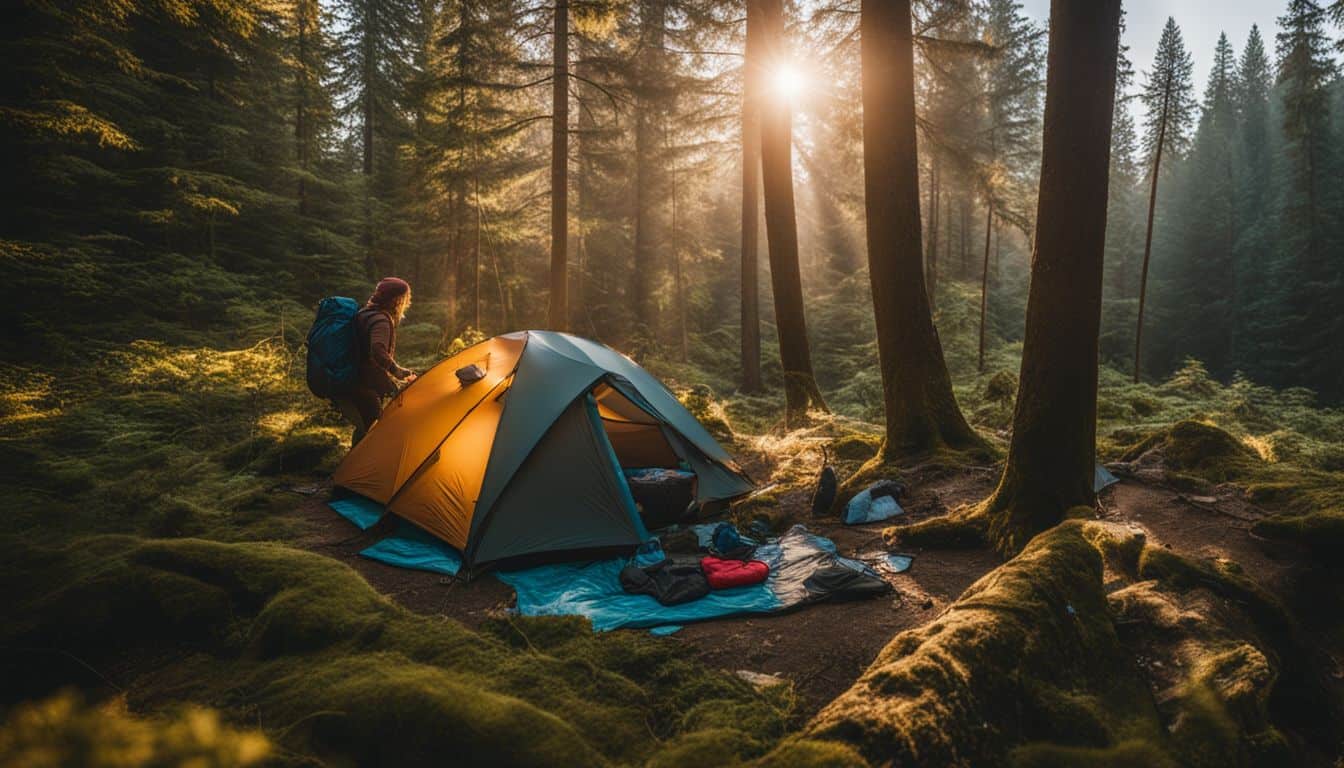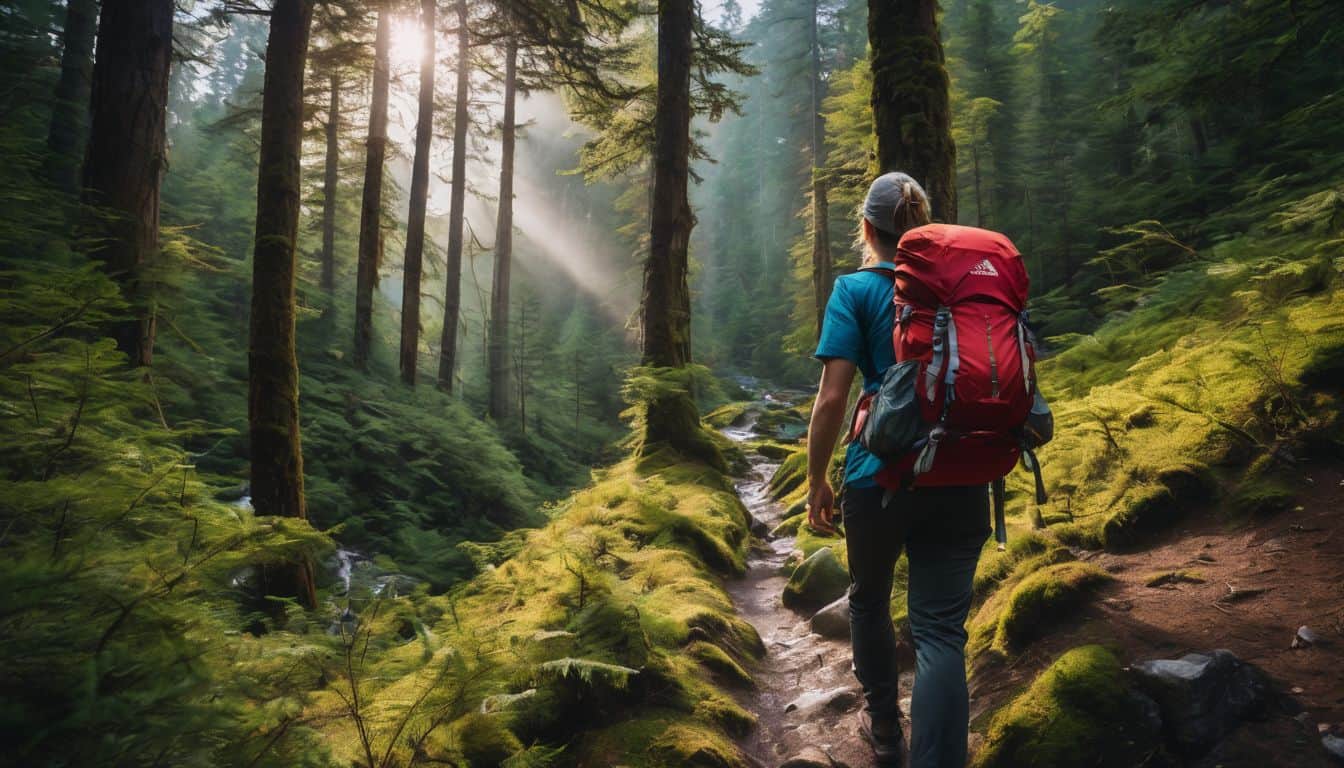Packing light for camping allows you to enjoy nature without being weighed down by unnecessary gear. It enhances your mobility, reduces physical strain, and often leads to a more immersive outdoor experience. By focusing on essentials and multi-purpose items, you can significantly reduce your pack weight while still ensuring comfort and safety. Here’s how to pack efficiently for your next camping trip:
Choose the Right Gear
- Opt for lightweight, multi-purpose items
- Consider a compact tent or hammock instead of a large tent
- Choose a lightweight sleeping bag appropriate for the weather
- Use a backpack or duffel bag that’s comfortable to carry
Selecting the right gear is crucial for lightweight camping. Look for items that serve multiple purposes to reduce the number of things you need to carry. For example, a camping pot can double as a bowl, and a multi-tool can replace several individual tools. When choosing a tent, consider the number of people and the weather conditions you’ll face.
Ultralight tents or hammocks can significantly reduce your pack weight. Your sleeping bag should be appropriate for the expected temperatures without being unnecessarily heavy. Finally, ensure your backpack or duffel bag fits comfortably and distributes weight evenly to make carrying easier.

Clothing Essentials
- Follow the one-shirt-per-day rule
- Pack lightweight, quick-drying fabrics
- Bring layers for temperature changes
- Limit yourself to one pair of sturdy hiking boots or sandals
- Use packing cubes to organize and compress clothing
When it comes to clothing, less is often more in camping. The one-shirt-per-day rule helps prevent overpacking. Choose clothes made from lightweight, quick-drying materials like merino wool or synthetic fabrics. These materials wick moisture, dry quickly, and resist odors. Layering is key for adapting to temperature changes; bring a base layer, insulating layer, and waterproof outer layer. For footwear, one pair of sturdy, comfortable boots or sandals is usually sufficient. Packing cubes can help organize your clothes and compress them to save space in your bag.
If you’re planning a trip with your family, our family camping guide offers additional tips for packing and planning.
Minimalist Cooking Setup
- Bring a small camping stove and fuel
- Pack one pot or pan that can serve multiple purposes
- Use lightweight, collapsible utensils and dishes
- Opt for dehydrated meals or easy-to-prepare foods
A minimalist cooking setup can significantly reduce your pack weight. A small, efficient camping stove and the necessary fuel are essential. Choose a single pot or pan that can handle various cooking tasks. Lightweight, collapsible utensils and dishes save space and weight. For food, consider dehydrated meals or easy-to-prepare options that require minimal cooking. This approach not only lightens your load but also simplifies meal preparation at the campsite.
Water Management
- Bring a water filtration system or purification tablets
- Use a collapsible water container
- Consider a hydration pack for hiking
Proper water management is crucial for both safety and weight reduction. Instead of carrying all your water, bring a reliable filtration system or purification tablets to treat water from natural sources. A collapsible water container is lightweight and can be filled when needed. For hiking, a hydration pack allows easy access to water without stopping and can encourage better hydration throughout the day.
For more tips on reducing your environmental impact while camping, check out our guide on eco-friendly camping.
Tips for Success
- Make a packing list and stick to it
- Test your gear before your trip
- Consider the specific needs of your camping location and duration
- Remember that some discomfort is part of the camping experience
Creating and adhering to a packing list is crucial for lightweight camping success. It helps prevent overpacking and ensures you don’t forget essential items. Before your trip, take time to test all your gear, especially if it’s new or hasn’t been used in a while. This includes setting up your tent, testing your stove, and ensuring your water filtration system works properly.
When making your list, consider the specific needs of your camping location and trip duration. Factors like climate, terrain, and available resources should influence your packing decisions. For example, a desert camping trip will require different gear than a mountain expedition. Lastly, embrace the fact that some level of discomfort is inherent to the camping experience. Accepting this mindset can help you resist the urge to overpack in an attempt to replicate home comforts.
Remember, the goal of lightweight camping is to immerse yourself in nature, not to recreate your living room outdoors. By focusing on essentials and being prepared for some challenges, you can enjoy a more authentic and rewarding outdoor experience.
Conclusion
By following these guidelines, you can significantly reduce the weight and bulk of your camping gear while still ensuring a safe and enjoyable outdoor experience. Remember, the key to minimalist camping is to bring only what you truly need and to make smart choices about multi-purpose gear.
For those new to camping, our beginner’s guide to types of camping can help you choose the right camping style for your needs and packing preferences.

Leave a Reply